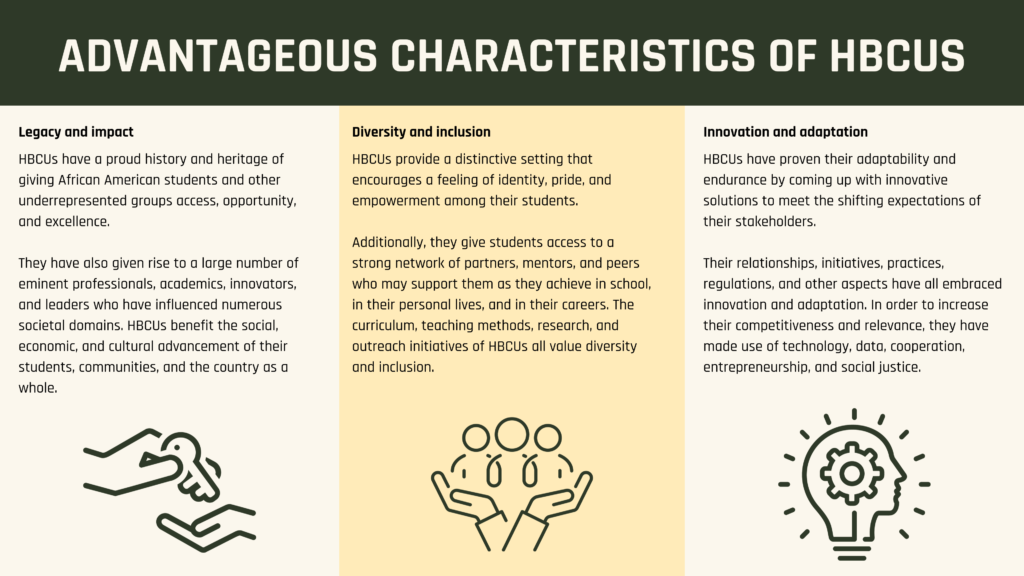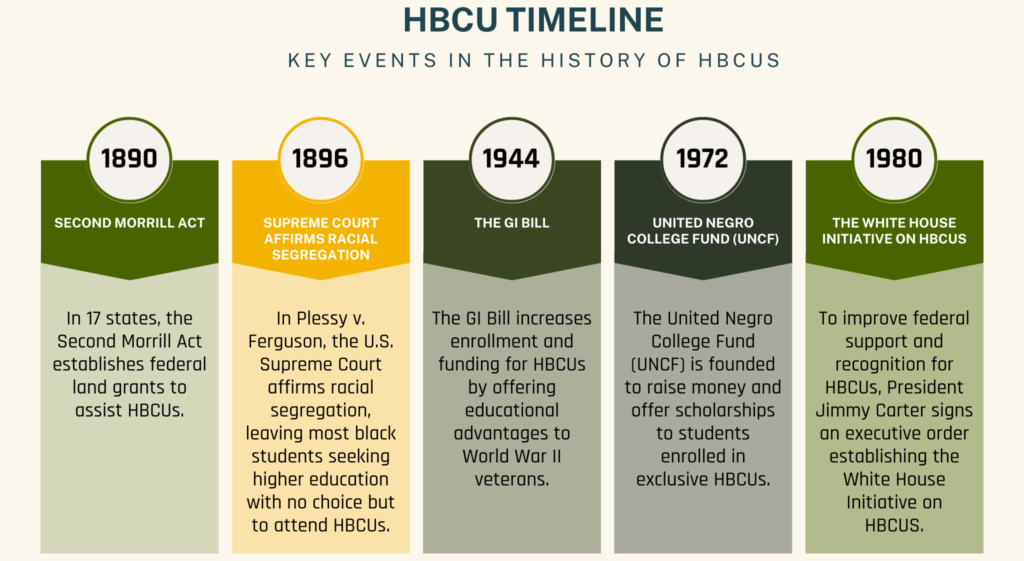Prior to the Civil Rights Act of 1964, historically Black colleges and universities (HBCUs) were founded with the goal of serving the Black population in the United States. These schools have made it possible for Black students, who were frequently shut out of colleges with a preponderance of white students, to pursue higher education.

The Founding of HBCUs
Prior to the Civil Rights Act of 1964, historically Black colleges and universities (HBCUs) were founded with the goal of serving the Black population in the United States. These schools have made it possible for Black students, who were frequently shut out of colleges with a preponderance of white students, to pursue higher education.
There are 107 HBCUs in the United States now, according to HBCU Buzz. In addition to graduate and undergraduate degrees in subjects like engineering, business, education, and the arts, these universities also offer a wide range of other academic programs.
The Mission
The mission of historically black colleges and universities (HBCUs) has changed over time from supplying former slaves and their descendants with fundamental education and training to providing a wide range of academic programs and degrees for diverse students from varied backgrounds. HBCUs have produced a number of distinguished professionals, scholars, artists, and leaders who have helped improve a number of societal fields and industries. Students, alumni, instructors, and staff at HBCUs enjoy a stronger sense of community, culture, identity, and pride. More than 300,000 students are enrolled in the more than 100 HBCUs that exist today across the nation. In higher education and beyond, they continue to play a crucial role in advancing excellence, innovation, and social justice.
HBCUs have had numerous difficulties over the years, despite their contributions to higher education and society at large. Underfunding, falling enrollment, and accreditation problems are some of these difficulties. But many HBCUs are still flourishing and giving students from many backgrounds meaningful educational opportunities.
Challenges and Advantageous Characteristics of HBCUs
HBCUs face numerous obstacles and setbacks, but they also have a lot of advantages and characteristics that can help them get through these problems and prosper in the future. Here are a few of these:



Looking Ahead and Supporting HBCUs
The Annie E. Casey Foundation-funded study came to the conclusion that there are a number of crucial recommendations that federal and state policymakers can abide by in order to better support HBCU students. Included among them are:
- Increase the funding provided by Congress to Historically Black Colleges and Universities (HBCUs) through Title III programs.
- Allocate additional funding for the Basic Needs for Postsecondary Students Program, which was recently created and will fund the creation of federal programs that address insecurity with regard to basic needs.
- Develop federal and state policies that will broaden the scope of SNAP and emergency financial assistance for students.
- Historically black community colleges, as well as other HBCUs, should get increased funding from the state.
- Students who attend historically black colleges and universities should have access to a wider range of financial assistance and emergency aid options.
A Timeline of significant points for HBCUs
The earliest HBCUs date to the early 1800s, when some of the first institutions for black students were founded in Pennsylvania and Ohio. The following timeline highlights some of the significant occasions and turning points in HBCU history:


Ways to Get Involved
You can visit some of the websites listed below if you want more information about HBCUs or if you want to show your support for them in any way.




